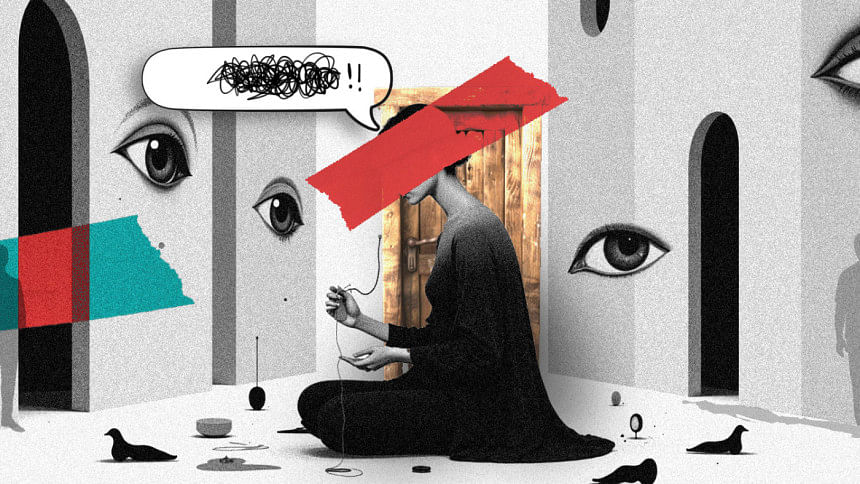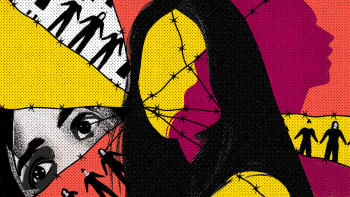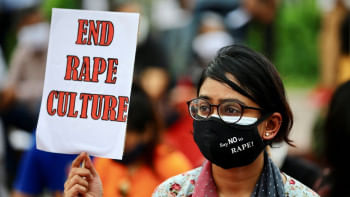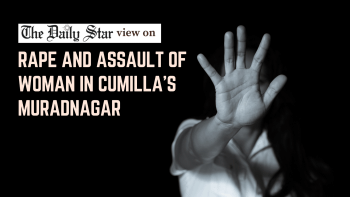When the state thinks like a man

A woman was tortured, disrobed, subjected to inhuman and degrading treatment in Muradnagar, Cumilla. She was filmed against her will, without her consent, and her shame was widely publicised, auctioned, and politicised. She, as a woman, does not inhabit the vacuum, and represents no one identity—she is a woman, has a non-dominant identity, and is socioeconomically vulnerable. These identities shape her lived reality and her movement across multiple axes of power, oppression, and dominance. Certainly, her sex was the most prominent at the time she was brutalised, tortured, and sexualised both physically and online, but other identities also contributed at varying degrees to the treatment she sustained.
The woman's body was lewdly relevant on social media, and so was the age-old vernaculars of gender politics. On one end, there were men (and women too) claiming there was no rape, but an extramarital affair, in a way justifying the act of gender-based torture and abuse. Then there were men sexualising the victim's body, aggravating her physical-sexual violence and reproducing her trauma. Even those who apparently were in favour of the victim, albeitunknowingly, were against victims of similar other crimes. "The door was broken, and this proves rape" or "there was force and force is a constituent element of rape," some argued. They were perhaps well-meaning, yet oblivious that there could have still been rape without the door being broken, without signs of physical force being visible, and without a perfect victim. Whether there was consent or not, legally speaking, is the fact in issue in a rape case, and is to be proven or disproven in a court of law within a criminal justice system of adequate standard. As it transpires, the victim will likely withdraw her case and our social media judges will likely hand down the final verdict against her, with pluralist disagreements, concurrent opinions, and perhaps a few dissents.
Feminist scholars argue that the concept of consent is inherently unequal, and we need to look beyond consent and physical force and at the multiple inequalities of power— age, class, race, religion— when adjudicating a coerced sexual relationship. Our laws and policies have historically been skewed, disproportionately impacting and marginalising women. Years of research-based advocacy has failed to bring in meaningful reforms in the rape laws (we have yet to change the 1860 Penal Code definition of rape, rather bringing in new confusions with few peripheral contestations such as criminalising sexual intercourse upon promise of marriage in the Nari o Shishu Nirjaton Domon (Shongshodhon) Ordinance, 2025. Our courts, too, have operated on a narrow domain of defining rape, and have largely been obsessed with evidence of physical force, with presumption of an ideal versus imperfect victim, and with uncalled for virtue-signalling every now and then. Our legal institutions and criminal justice actors all reflect a perverse lack of gender sensitivity, if not always blatant misogyny. Careful research on the laws and judgements clearly reveal how the state and its institutions have always thought like a man without leaving inches at all for intersectional storytelling on part of the victim, who is almost always a woman or a child.
The nation-building in the post-independence context did not have an explicit "woman question" in mind. The inexplicable sexual violence sustained by women during the Liberation War became a peripheral national shame wrought by the war enemies and not a central nation-building issue to be confronted with. The woman question got packaged and "NGO-ised" as a development agenda in the 1980s and continued to be so in various forms. With the reform agenda for the so-called "second republic", the meta and macro reform agendas screamed the loudest, without being at all in conversation with the woman question. Even the agenda on women's reserved seats in parliament sounds hollow when major political parties speak in the language of formal and formulaic equality without accounting for what lies in the substance.
An individual woman sustains the crudest of what is decided by powerful men for women as a collective. The rather benign jokes about women being subservient to men, thoughtless abuses hurled at women demanding equality, acts of physical violence against women simply for dressing differently (and celebrations surrounding such acts of violence)— all undergird such gender-based torture. It is the appositional norms of compulsion and compliance, dominance and subservience, within which such gender-based violence takes place, and with such violence, we see why the private is in fact political, and how simply gender-based inequalities get compounded and exacerbated.
The incident unmasked, yet again, the cruel face of the state as a male homologue, with all its male institutions, built political environment and infrastructures. Indeed, the state is a male, and "it adopts the standpoint of male power" on the relation between woman and the state, always.
Psymhe Wadud teaches law at the University of Dhaka and is in charge of Law & Our Rights at The Daily Star.
Views expressed in this article are the author's own.
Follow The Daily Star Opinion on Facebook for the latest opinions, commentaries and analyses by experts and professionals. To contribute your article or letter to The Daily Star Opinion, see our guidelines for submission.


 For all latest news, follow The Daily Star's Google News channel.
For all latest news, follow The Daily Star's Google News channel. 











Comments